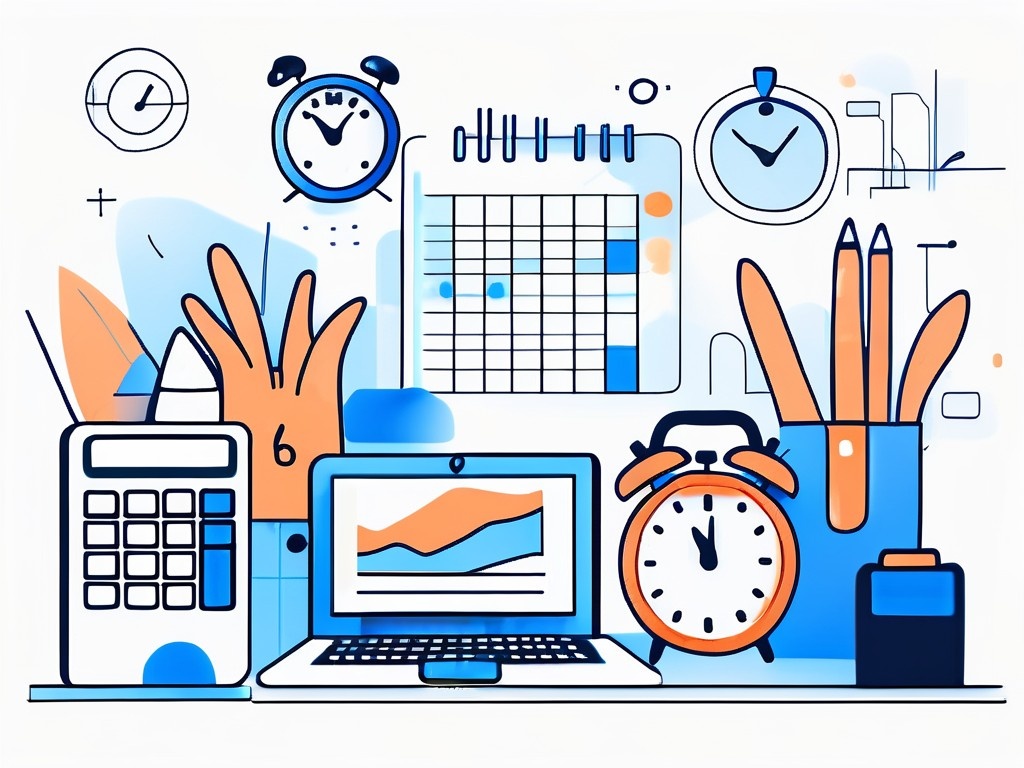In the realm of childcare administration, managing the financials and human resources of a center can be a complex undertaking. Effectively overseeing these areas requires careful attention to detail, strategic planning, and efficient processes. By implementing an integrated administration system that encompasses both financial management and human resources, childcare centers can streamline their operations and enhance their overall performance. In this article, we will explore the intricacies of childcare administration and delve into the benefits of adopting a comprehensive solution that addresses these critical functions.
Understanding the Complexities of Childcare Administration
The Role of Financial Management in Childcare
Financial management forms the backbone of any successful childcare center. It involves overseeing revenue generation, budgeting, and ensuring financial stability. A robust financial system enables administrators to accurately track expenses, monitor revenue streams, and forecast future financial needs. This data provides valuable insights into the financial health of the center and informs decision-making processes.
Furthermore, effective financial management in childcare administration extends beyond day-to-day operations. It also encompasses strategic financial planning, such as identifying potential sources of funding, managing cash flow, and implementing cost-saving measures. By conducting regular financial analyses and performance evaluations, administrators can proactively address financial challenges and capitalize on opportunities for growth and sustainability.
The Importance of Human Resources in Childcare Administration
Human resources plays a vital role in the proper functioning of a childcare center. Effective management of staff, recruitment, training, and development are essential to ensure a qualified and competent workforce. By focusing on the human resources aspect, administrators can create a positive work environment, foster employee engagement, and optimize staff performance. Additionally, managing employee records, payroll, and benefits administration are key functions that fall under the purview of human resources.
In addition to the operational aspects, human resources in childcare administration also involves creating and implementing policies and procedures that promote a safe and inclusive environment for both children and staff. This includes ensuring compliance with relevant labor laws, conducting performance evaluations, and addressing any employee grievances or conflicts that may arise. By prioritizing the well-being and professional development of staff members, childcare administrators can cultivate a supportive workplace culture that ultimately enhances the quality of care provided to children.
Schedule a free 30-minutes session with us
Streamlining Financial Processes in Childcare Administration
Budgeting and Financial Planning for Childcare Centers
Budgeting and financial planning are integral components of childcare administration. By setting realistic financial goals and creating a comprehensive budget, administrators can make informed decisions regarding resource allocation, investment opportunities, and operational improvements. Regular monitoring and analysis of financial performance against these plans enable proactive adjustments, ensuring financial stability and sustainability.
Moreover, effective budgeting and financial planning in childcare centers involve not only forecasting expenses but also anticipating revenue streams. Administrators need to consider various sources of income, such as tuition fees, government subsidies, and donations, to ensure a balanced budget. By conducting thorough market research and analyzing historical data, administrators can develop accurate financial projections that support the center’s growth and development initiatives.
Efficient Financial Reporting and Analysis
Accurate and timely financial reporting is crucial for effective decision-making in childcare administration. An integrated administration system can automate the generation of financial reports, providing administrators with real-time insights into revenue, expenses, and profitability. By leveraging this information, administrators can identify trends, evaluate financial performance, and make data-driven decisions to optimize the center’s financial health.
Furthermore, in addition to standard financial reports like income statements and balance sheets, childcare administrators can benefit from specialized reports that focus on key performance indicators (KPIs) specific to the industry. These KPIs may include metrics such as enrollment rates, average revenue per child, and staff-to-child ratios, offering a more comprehensive view of the center’s operational and financial efficiency. By analyzing these KPIs alongside traditional financial reports, administrators can gain a holistic understanding of the center’s performance and implement targeted strategies for improvement.
Optimizing Human Resources in Childcare Administration
Staffing and Recruitment Strategies
Staffing and recruitment are critical components of human resources management in childcare administration. A comprehensive administration solution can streamline these processes, enabling administrators to efficiently identify staffing needs, source qualified candidates, and manage the entire recruitment lifecycle. By adopting effective strategies and utilizing technology, administrators can attract top talent, ensure appropriate staffing levels, and create a skilled and dedicated workforce.

One key aspect of successful staffing and recruitment strategies in childcare administration is the establishment of strong partnerships with educational institutions and professional organizations. By collaborating with universities, colleges, and early childhood education associations, administrators can tap into a pool of aspiring educators and professionals who are passionate about working in childcare. This proactive approach not only helps in identifying potential candidates but also fosters a sense of community within the childcare industry.
Training and Development Programs for Childcare Staff
Investing in the training and development of childcare staff is paramount to providing high-quality care and education. An integrated administration system can facilitate the implementation and management of training programs, tracking staff certifications and professional development requirements. By offering ongoing training opportunities and recognizing staff accomplishments, administrators can promote employee growth, foster a culture of continuous learning, and improve overall staff performance.
In addition to traditional training methods, childcare administrators can also explore innovative approaches such as job shadowing, mentoring programs, and cross-training initiatives. These initiatives not only enhance the skills and knowledge of staff members but also promote collaboration, teamwork, and a sense of camaraderie among colleagues. By encouraging a culture of sharing expertise and learning from one another, childcare organizations can create a dynamic and supportive work environment that benefits both staff and the children under their care.
Schedule a free 30-minutes session with us
The Benefits of an Integrated Administration System
Enhancing Operational Efficiency
By utilizing an integrated administration system, childcare centers can streamline their operations and eliminate redundancies. The system centralizes data, allowing administrators to access necessary information quickly and efficiently. Integrated modules for financials and human resources ensure seamless communication and collaboration, eliminating the need for disjointed systems and manual data entry. This automation reduces administrative burdens and empowers administrators to focus on strategic initiatives and improving service delivery.

Moreover, an integrated administration system can provide real-time insights and analytics, enabling administrators to make data-driven decisions. By generating reports on key performance indicators and operational metrics, childcare centers can identify areas for improvement and optimize resource allocation. This data-driven approach enhances operational efficiency and fosters a culture of continuous improvement within the organization.
Improving Compliance and Risk Management
Compliance with regulatory requirements and effective risk management are crucial aspects of childcare administration. An integrated administration system enables administrators to track compliance obligations, manage necessary documentation, and ensure adherence to governmental regulations. By automating compliance processes, such as background checks and recordkeeping, the system reduces the risk of errors or oversights, mitigating potential legal and financial liabilities.
Furthermore, the system’s built-in audit trails and security features enhance transparency and accountability in childcare center operations. Administrators can monitor user activities, track changes to sensitive data, and ensure data integrity and confidentiality. This robust compliance framework not only safeguards the organization against regulatory risks but also builds trust with stakeholders, including parents, staff, and regulatory authorities.
Choosing the Right Administration Solution for Your Childcare Center
Key Features to Look for in an Administration Solution
When selecting an administration solution for a childcare center, several key features should be considered. Integration capabilities for financials and human resources, user-friendly interfaces, and robust reporting functionalities are essential. Additionally, compatibility with existing systems, scalability, and the availability of ongoing support and training are vital factors to evaluate. By carefully assessing these criteria, administrators can identify a solution that aligns with their center’s unique needs and long-term goals.

Integration capabilities are crucial in streamlining the administrative processes of a childcare center. A comprehensive administration solution should seamlessly integrate financial management and human resources functions, allowing administrators to efficiently manage payroll, billing, and employee records. This integration eliminates the need for manual data entry and reduces the risk of errors, saving valuable time and resources.
Moreover, user-friendly interfaces play a significant role in the successful adoption of an administration solution. Childcare administrators, often wearing multiple hats, require a system that is intuitive and easy to navigate. A well-designed interface with clear and logical workflows ensures that administrators can quickly access the information they need and perform tasks efficiently. This user-friendly approach enhances productivity and minimizes the learning curve for new users.
Evaluating the Cost and Value of Administration Solutions
While cost is undeniably a factor in choosing an administration solution, it should not be the sole determining factor. A comprehensive system that meets the center’s requirements and offers scalability and adequate support may justify a higher upfront investment. Comparing the overall value of the solution, including long-term benefits, return on investment, and the potential for increased efficiency, is crucial in making an informed decision. Balancing cost considerations with the potential for enhanced operational effectiveness is key to choosing the right administration solution for your childcare center.
Scalability is another critical aspect to consider when evaluating administration solutions. A childcare center’s needs can evolve over time, with changes in enrollment, staffing, and program offerings. The chosen administration solution should have the flexibility to grow and adapt alongside the center, accommodating increased capacity and additional functionalities as required. This scalability ensures that the administration solution remains a valuable asset for the long-term success of the childcare center.
In conclusion, effective childcare administration requires the seamless integration of financial management and human resources functions. By implementing an integrated administration system, childcare centers can optimize their operational efficiency, ensure compliance, improve financial stability, and provide a nurturing environment for their staff and children. The transition from financials to HR becomes a total solution that empowers childcare administrators to focus on their core mission of delivering quality care and education to the children under their care—a rewarding and fulfilling endeavor in itself.
